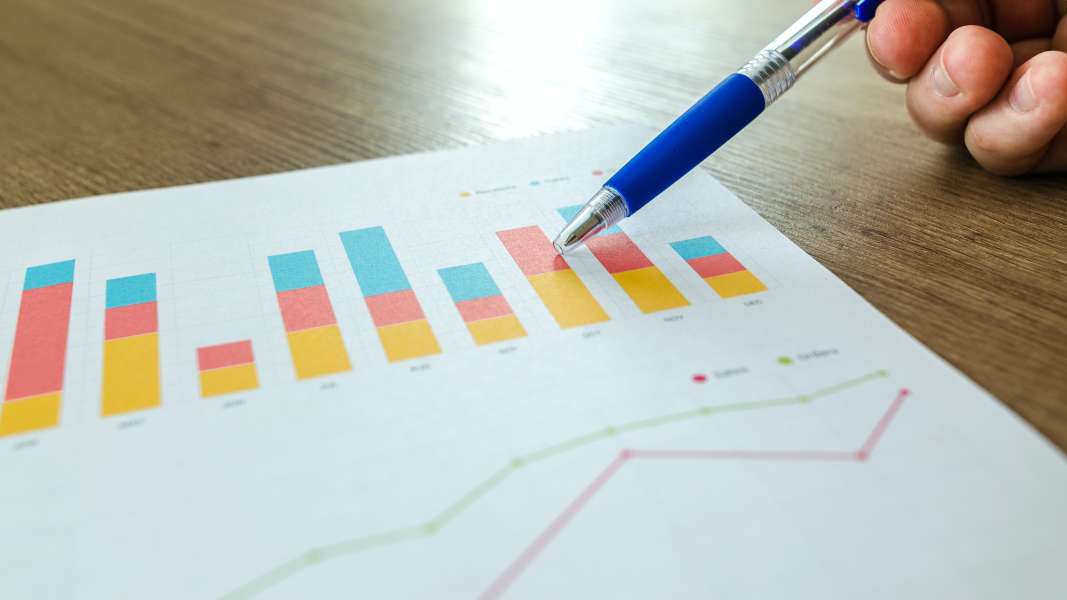Can you improve your skills?
Numerical reasoning tests are common screening assessments used for a variety of roles in most industries, and they can sometimes be daunting, especially for those of us who might have bad memories of maths exams in school.
However, numerical reasoning assessments are not maths tests. They are not about your ability to use complicated, half-remembered formulas and equations. They are tests to see how you can interpret numerical data to solve problems and make reasoned decisions, and how you can apply basic mathematical knowledge to workplace-related numbers.
In this article we will look at the different skills you will need to have for your numerical reasoning test, and what you should work on to improve those skills.
Numerical reasoning is something that can be improved, and all it takes is to practice the basics to get the best score you can.
What skills should you improve?
Basic skills:
Addition and Subtraction
Addition is one of the first skills you will have learned in school maths lessons, and subtraction is relatively straightforward.
In some numerical reasoning tests you will be allowed to use a calculator, but it is always worth ensuring that you are confident in your mental arithmetic skills for adding and subtracting, especially when it comes to fractions, decimals, and percentages (more on that later).
Multiplication and Division
These basic operations are an important part of the numerical reasoning test, and you should expect to multiply and divide whole numbers and multiple digit numbers.
With a calculator, it is easier but look for a reliable method for both long division and long multiplication so you are confident enough to deal with big numbers in your head. Remember your ‘times tables‘ that you learned at school - they will come in handy for both multiplication and division.
Multiplication and division ability will help when you are dealing with things like fractions, decimals, percentages, and ratios.
Complex skills
The more complex skills here are the same as you would have learned in school, and they are less complicated and in-depth than the skills you needed for GCSE maths, even if that seems like a lifetime ago.
Fractions
A fraction is made of a numerator and a denominator. It is used to demonstrate parts of a whole.
The denominator is the total number of parts, and the numerator is the number of parts that we are dealing with.
If we split a pie into four equal pieces and gave away one, we would have ¾ left. The piece we gave away would be ¼ when represented as a fraction.
A skill that will help you when dealing with fractions is being able to simplify them; by making them as small as possible you are giving yourself the best chance to perform other operations on them.
For example, the fraction 50/200 can be simplified by dividing both the numerator and the denominator by 10 = 5/20 and then by 5 = ¼. This fraction is much easier to deal with if you need to add it to another fraction or multiply it.
Decimals
Decimals are used to describe numbers that are ‘in-between‘ whole numbers. The decimal divides each whole number into tenths, hundredths, and thousandths according to place value on the right-hand side of a decimal point.
For example, 7.462 is a number between 7 and 8, and it can be described in words as 7 and 4 tenths, 6 hundredths, and 2 thousandths.
Decimals are useful to use because they are a big part of currency calculations and you are likely to have some sort of money-based question in your numerical reasoning test.
Decimals, fractions, and percentages can all be converted to each other with some simple calculations, so you must know how to convert a fraction to a decimal and vice versa.
Percentages
Percentages describe numbers as a fraction of 100, so you can work out how many parts per hundred there are. Percentages are used in all sorts of scenarios, from the number of students in a class that use social media daily to how much a business has grown in the last year.
The basic percentage formula is number / total x 100. If you wanted to calculate what percentage of 20 people out of 80 is, you would divide 20 by 80 and multiply the result by 100.
20 / 80 x 100 = 25%.
As part of your revision, make sure you cover:
- Percentage increase
- Percentage decrease
- Percentage difference
- Multiplying percentages
- Adding percentages
- Turning percentages into fractions
Ratio
A ratio compares the proportion of different things in a set or a group. For example, if you had a basket of fruit, there might be two oranges for every apple.
This ratio would be expressed as 2:1.
If you wanted to know how many oranges there would be if there were 14 apples, then you would multiply both sides by 14 - so if there were 14 apples in the basket, there would be 28 oranges.
Some of the ratio-related skills that you need to know include:
- Simplifying ratios
- Dividing ratios
- Multiplying ratios
- Calculating increases using ratios
- Converting ratios to fractions
Calculating with time
When presented with adding times together, understanding that this is not a decimal calculation but one based around a root number of 60 makes it much more complicated.
Most of the time, you will find calculating time easier if you convert the hours and minutes into just minutes.
If you had to calculate the total driving time of a route that was 1 hour and 34 minutes for the first leg, with a pitstop at the services, and then 2 hours and 6 minutes for the second part, then it would be easiest to use minutes for clarity.
For example, one hour and 34 minutes would be represented as 94 minutes. 2 hours and 6 minutes would be 126 minutes.
Adding these together would equal 220 minutes, or 3 hours and 40 minutes.
You are likely to need to remember how to calculate speed, distance, and time using the formula distance / time = speed, or you can use the triangle method.
Estimation and Approximation
Sometimes in the workplace, you will need to make estimations and approximations of figures, when quick calculations are taking place.
Estimations and approximations are common sense best guesses based on the available information, where you want to be able to get as close to the right answer as possible but are not able to perform the whole calculation.
As an example, if you were asked to complete the equation 264 x 926 you would probably need a piece of paper and a pen if not a calculator, but an estimation would tell you that it would be a 6-figure answer.
Rounding
Rounding is a skill that can help when estimating but is also useful for making decimals easier to deal with.
The general rule with rounding is that if the last number is less than five, it rounds down to the nearest place. If the last number is five or more, it rounds up.
For example, if you were asked to round the following to two decimal places:
5.143 would round down to 5.14 (3 is less than 5)
7.269 would round up to 7.27 (9 is more than 5)
Different methods to practice
Practice
The application of these skills is what the recruitment team is looking for, and although you need to be confident in making the calculations it is the reasoned use of them to make important decisions.
For the best results, practice tests provide you with a lot of information. Firstly, you will get used to the way that numerical reasoning tests are presented, the time limits that you will have to work with, and how they need to be answered. Most numerical reasoning tests have multiple choice answers and a tight time limit, so you need to get used to working quickly and using the available answers to check that you are performing the right calculations.
Secondly, your results from the practice tests will help you pinpoint any areas in your skills that might need some more work or where you are less confident. Focusing your revision and practice on these areas will help you do better in the numerical reasoning test when you take it for real.
Review maths concepts
Whether you are applying formulas to a question in a numerical reasoning test or calculating the amount you need to pay towards a joint restaurant bill, maths concepts don‘t change.
Reviewing the way they work and getting familiar with dealing with the different formulas will help you be more confident when you come across a problem in the assessment that seems confusing - percentages are always ‘parts per hundred‘ however you are using them, for example.
Use maths in your everyday life
If you need to add something up or divide a cake into equal pieces, don‘t reach for the calculator.
Using maths as a part of your everyday life will make the formulas simple to remember and easier to use. Mental arithmetic is something that gets better with practice, and by using maths in your everyday life you will become better at calculations as well as estimating.
Game-based learning
Games are not just for kids, and there are many maths games that you can get on your smartphone or your computer that will get your brain working.
There are many learning resources online that turn maths into a game; while most of these are aimed at children for GCSEs, you can make use of them too. BBC Bitesize is an excellent resource for this.
Brain training-style games are an excellent learning tool for all sorts of aptitude or psychometric testing, and by making the learning fun you are more likely to retain the knowledge so you can apply it in your pre-employment screening tests.



